9 Eileen Gray Important folding 'Brick' screen circa 1925 Black lacquered wood, steel, brass. 213.4 cm (84 in.) tall, variable width, as pictured: 177.8 cm (70 in.). Each large brick: approximately 26.7 x 40 x 2 cm (10 1/2 x 15 3/4 x 0 3/4 in.)
Provenance Jean Désert, Paris Jean Badovici Paris Mr. & Mrs. Robert Walker Paris Private collection Sotheby’s, New York, ‘Important 20th Century Furniture/A Philip Johnson Townhouse’, May 6, 1989, lot 91 Acquired from the above by the present owner Exhibited 'Picasso, Braque, Léger and the Cubist Spirit 1919-1939', Portland Museum of Art, Portland, Maine, June 29-October 20, 1996 Literature Philippe Garner, Eileen Gray Designer and Architect, Cologne, 1993, illustrated on the front cover, p. 48, fig. 5 Kenneth Wayne, Picasso, Braque, Léger and the Cubist Spirit 1919-1939, exh. cat., Portland Museum of Art, Portland, 1996, illustrated p. 45 Peter Adam, Eileen Gray Architect/Designer, New York, 2000 (rev. ed.), illustrated p. 123, cat. rais. no. 3.4 Peter Adam, Eileen Gray Her Life and Work, Munich, 2008, illustrated p. 263 Roger Griffith, Margo Delidow, and Chris McGlinchey, ‘Peeling back the layers: Eileen Gray’s brick screens’, Studies in Conservation, vol. 57, 2012,illustrated p. S133, figs. 3-4 Jennifer Goff, Eileen Gray Her Work and Her World, Sallins, 2015, illustrated p. 17, fig. 7 Video Eileen Gray ‘Important folding ‘Brick’ screen’, circa 1925 Eileen Gray ‘Important folding ‘Brick’ screen’, circa 1925 from our Modern Masters: Design Evening Sale taking place on 27 April 2016 in London. Catalogue Essay The present screen is listed as object number 3.4 in Peter Adam’s Catalogue Raisonné of Eileen Gray’s freestanding furniture published in both his original 1987 and revised 2000 editions of Eileen Gray Architect/Designer. Adam notes the provenance as Jean Badovici’s rue Chateaubriand apartment, which Gray designed for the Romanian architect in the late 1920s. Unique in its configuration, and among the largest examples, the present screen is composed of thirty-six full bricks with raised panels on either side and eight half-bricks, all forty-four of which are held together by threaded mild steel rods surmounted by domed brass spanner nuts of the same design as those on Gray’s “Transat” chair (circa 1926-1930), also owned by Badovici. In 2012 a team of conservators lead by Roger Griffith of the Museum of Modern Art’s Conservation Department completed an exhaustive survey of four ‘Brick’ screens, including the present lot. Samplings of this screen revealed the presence of two historic layers of urushi lacquer dating to the 1920s, over which appears a later layer of cellulose nitrate and lamp black, likely dating to the 1970s when Eileen Gray organized the restoration of most extant screens. ‘Brick’ screens are in the permanent collections of the National Museum of Ireland, Dublin; The Museum of Modern Art, New York; the Virginia Museum of Fine Arts, Richmond; and the Victoria and Albert Museum, London. The first three of these screens were included in Griffith’s 2012 study and also show evidence of 1970s layers. In an undated letter to her niece Prunella Clough Gray claimed to have produced only ten ‘Brick’ screens, as noted by Dr. Jennifer Goff, Curator of the Eileen Gray collection at the National Museum of Ireland (Eileen Gray Her Work and Her World, 2015, p. 441). Of this small group, the present lot dates to the earliest years of production in the mid-1920s. Known informally as The Badovici Screen, it was reputedly purchased by its first owner from Gray’s Paris gallery Jean Désert, as stated by Philippe Garner in his notes accompanying Christie’s sale of another screen from the Château de Gourdon collection in 2011. The present screen was later acquired in the 1970s by Mr. and Mrs. Robert Walker renowned collectors of Gray’s work, who installed it in their Paris apartment. Please note this lot has been requested by Cloé Pitiot, curator at the Centre Pompidou, Paris, for ‘Eileen Gray’, her fall 2018 exhibition scheduled for The Bard Graduate Center, New York. 'The screens are a revolt', declared Eileen Gray to her niece, the artist Prunella Clough in a 1971 letter now in the National Museum of Ireland. A sharp
9 Eileen Gray Important folding 'Brick' screen circa 1925 Black lacquered wood, steel, brass. 213.4 cm (84 in.) tall, variable width, as pictured: 177.8 cm (70 in.). Each large brick: approximately 26.7 x 40 x 2 cm (10 1/2 x 15 3/4 x 0 3/4 in.)
Provenance Jean Désert, Paris Jean Badovici Paris Mr. & Mrs. Robert Walker Paris Private collection Sotheby’s, New York, ‘Important 20th Century Furniture/A Philip Johnson Townhouse’, May 6, 1989, lot 91 Acquired from the above by the present owner Exhibited 'Picasso, Braque, Léger and the Cubist Spirit 1919-1939', Portland Museum of Art, Portland, Maine, June 29-October 20, 1996 Literature Philippe Garner, Eileen Gray Designer and Architect, Cologne, 1993, illustrated on the front cover, p. 48, fig. 5 Kenneth Wayne, Picasso, Braque, Léger and the Cubist Spirit 1919-1939, exh. cat., Portland Museum of Art, Portland, 1996, illustrated p. 45 Peter Adam, Eileen Gray Architect/Designer, New York, 2000 (rev. ed.), illustrated p. 123, cat. rais. no. 3.4 Peter Adam, Eileen Gray Her Life and Work, Munich, 2008, illustrated p. 263 Roger Griffith, Margo Delidow, and Chris McGlinchey, ‘Peeling back the layers: Eileen Gray’s brick screens’, Studies in Conservation, vol. 57, 2012,illustrated p. S133, figs. 3-4 Jennifer Goff, Eileen Gray Her Work and Her World, Sallins, 2015, illustrated p. 17, fig. 7 Video Eileen Gray ‘Important folding ‘Brick’ screen’, circa 1925 Eileen Gray ‘Important folding ‘Brick’ screen’, circa 1925 from our Modern Masters: Design Evening Sale taking place on 27 April 2016 in London. Catalogue Essay The present screen is listed as object number 3.4 in Peter Adam’s Catalogue Raisonné of Eileen Gray’s freestanding furniture published in both his original 1987 and revised 2000 editions of Eileen Gray Architect/Designer. Adam notes the provenance as Jean Badovici’s rue Chateaubriand apartment, which Gray designed for the Romanian architect in the late 1920s. Unique in its configuration, and among the largest examples, the present screen is composed of thirty-six full bricks with raised panels on either side and eight half-bricks, all forty-four of which are held together by threaded mild steel rods surmounted by domed brass spanner nuts of the same design as those on Gray’s “Transat” chair (circa 1926-1930), also owned by Badovici. In 2012 a team of conservators lead by Roger Griffith of the Museum of Modern Art’s Conservation Department completed an exhaustive survey of four ‘Brick’ screens, including the present lot. Samplings of this screen revealed the presence of two historic layers of urushi lacquer dating to the 1920s, over which appears a later layer of cellulose nitrate and lamp black, likely dating to the 1970s when Eileen Gray organized the restoration of most extant screens. ‘Brick’ screens are in the permanent collections of the National Museum of Ireland, Dublin; The Museum of Modern Art, New York; the Virginia Museum of Fine Arts, Richmond; and the Victoria and Albert Museum, London. The first three of these screens were included in Griffith’s 2012 study and also show evidence of 1970s layers. In an undated letter to her niece Prunella Clough Gray claimed to have produced only ten ‘Brick’ screens, as noted by Dr. Jennifer Goff, Curator of the Eileen Gray collection at the National Museum of Ireland (Eileen Gray Her Work and Her World, 2015, p. 441). Of this small group, the present lot dates to the earliest years of production in the mid-1920s. Known informally as The Badovici Screen, it was reputedly purchased by its first owner from Gray’s Paris gallery Jean Désert, as stated by Philippe Garner in his notes accompanying Christie’s sale of another screen from the Château de Gourdon collection in 2011. The present screen was later acquired in the 1970s by Mr. and Mrs. Robert Walker renowned collectors of Gray’s work, who installed it in their Paris apartment. Please note this lot has been requested by Cloé Pitiot, curator at the Centre Pompidou, Paris, for ‘Eileen Gray’, her fall 2018 exhibition scheduled for The Bard Graduate Center, New York. 'The screens are a revolt', declared Eileen Gray to her niece, the artist Prunella Clough in a 1971 letter now in the National Museum of Ireland. A sharp


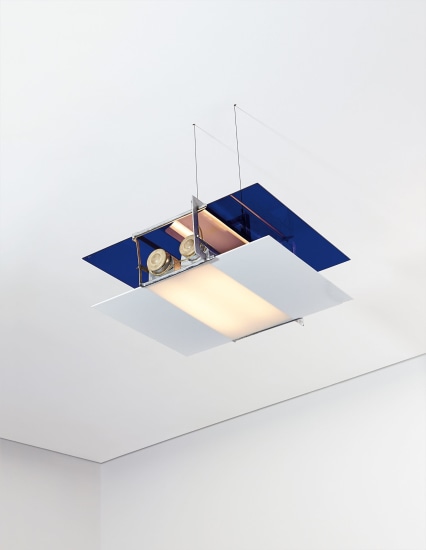
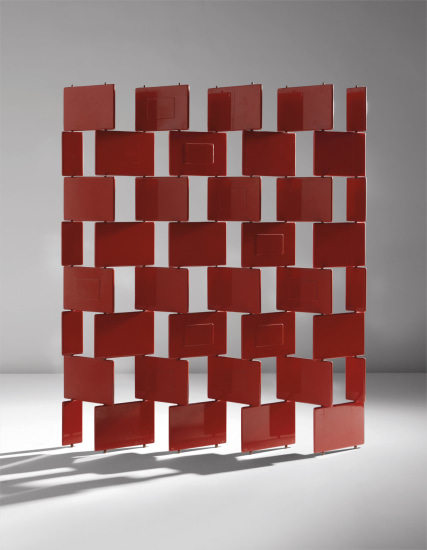
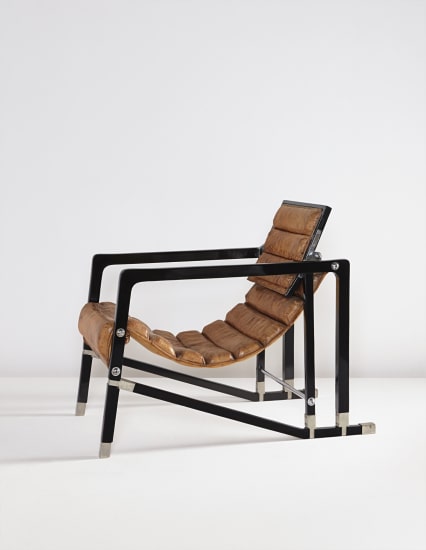





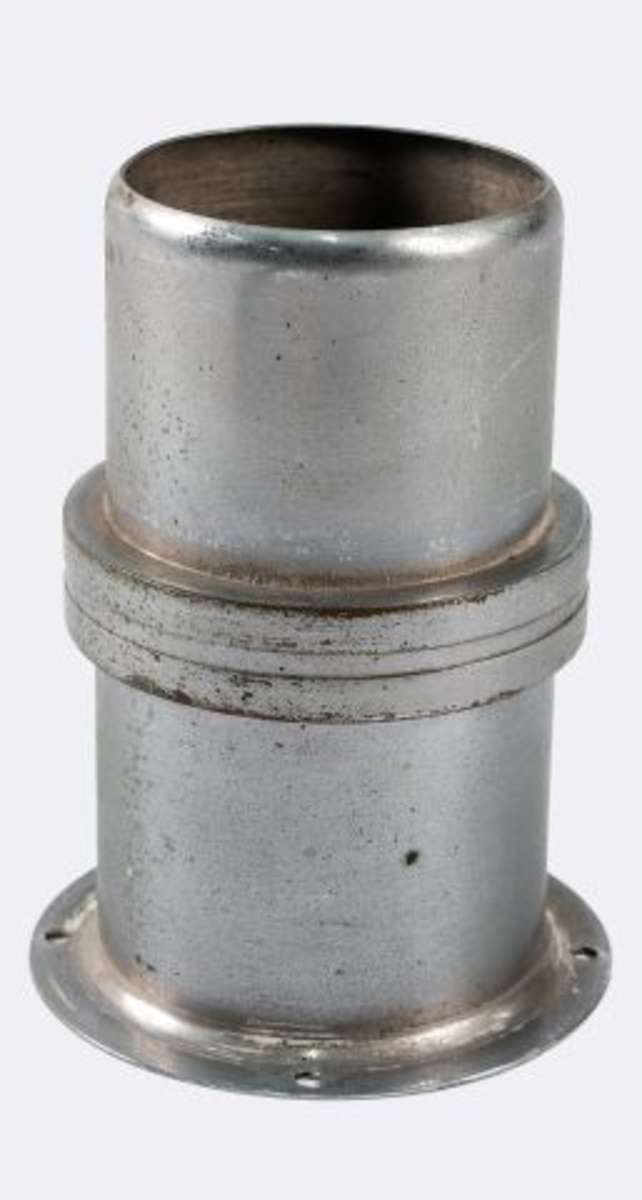

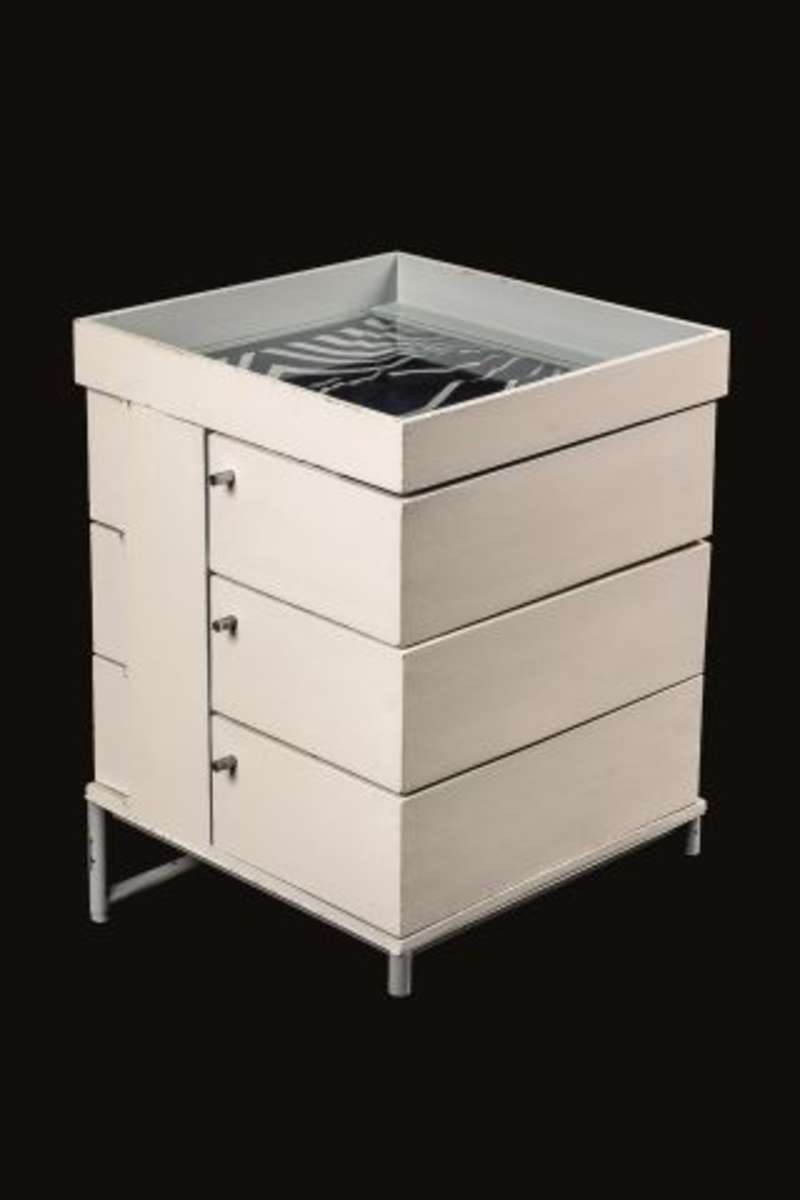

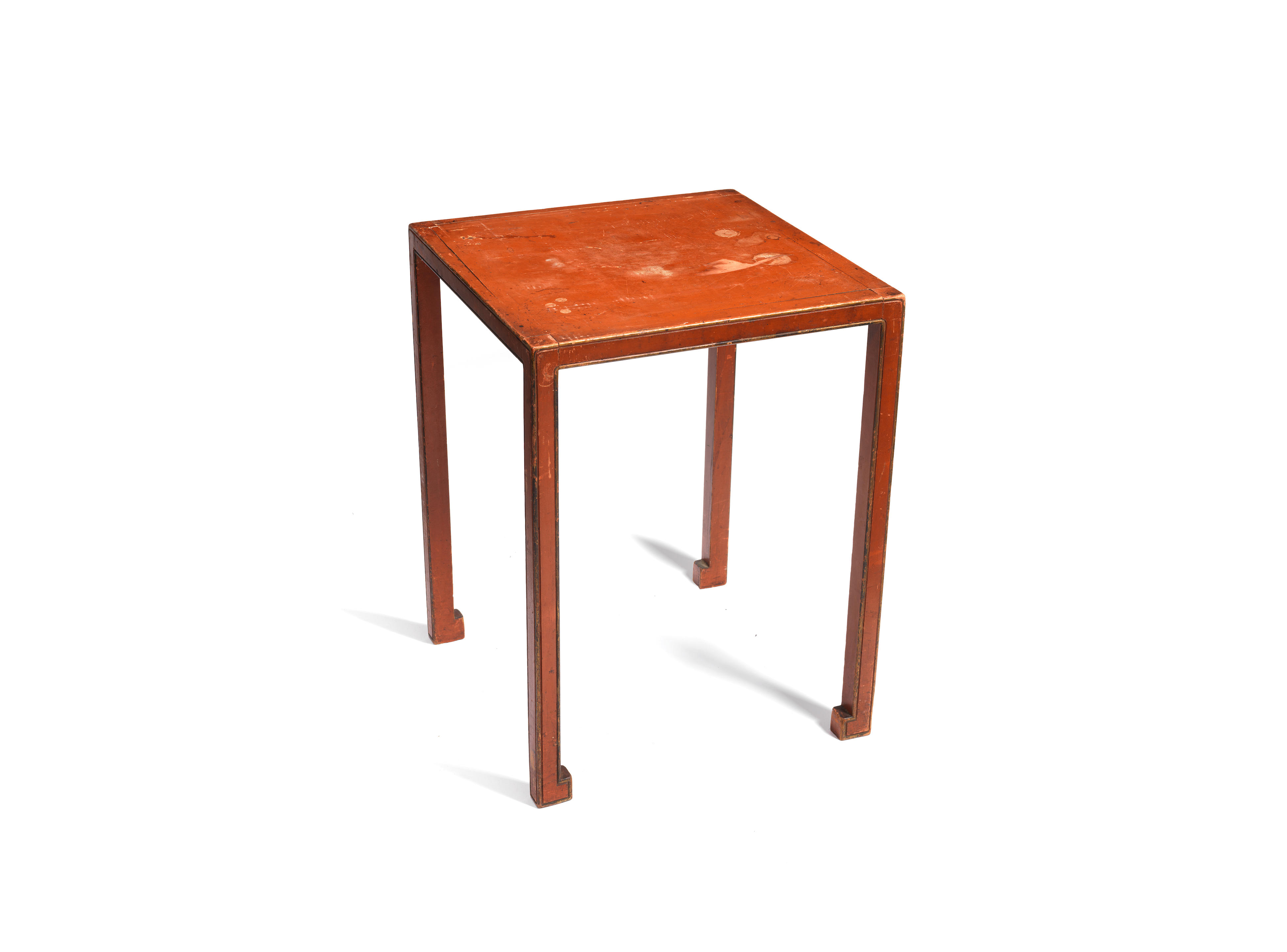
Testen Sie LotSearch und seine Premium-Features 7 Tage - ohne Kosten!
Lassen Sie sich automatisch über neue Objekte in kommenden Auktionen benachrichtigen.
Suchauftrag anlegen